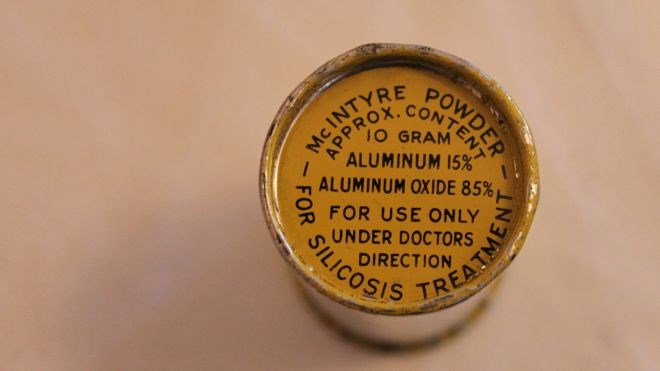A WSIB-commissioned review of scientific research into the connection between aluminum powder exposure in the workplace and adverse health effects in miners has failed to find a link between exposure and illness.
On Aug. 17, the WSIB issued a release with the findings of the review — titled Systematic Review of Occupational Aluminum Exposure and Adverse Health Conditions — which Intrinsik Corp. launched earlier this year.
“Overall, the systematic review and the statistical analysis conducted showed that the question of health risks from workplace aluminum exposure is complicated,” reads the study’s summary.
“The findings across the literature were inconsistent. Epidemiological studies have failed to establish consistent associations or clear exposure response relationships between workplace aluminum exposure and nervous system-related diseases, cognitive outcomes, lung function outcomes, and other negative outcomes.”
The study comes following mounting pressure from former miners who were required to inhale finely ground aluminum — known in the industry as McIntyre Powder — prior to their shifts at various mines across the North, as a condition of their employment.
Impacted miners have been brought together through the efforts of Janice Martell, who founded the McIntyre Powder Project, a quest to find more answers following the 2001 diagnosis of Parkinson’s in her father Jim Hobbs, a retired miner.
Hobbs died of the disease in May of this year.
Intrinsik said it reviewed 63 epidemiological studies, published between 1985 and 2016, which looked into health effects associated with workplace exposure to aluminum.
Of those, the studies mainly focused on nervous system-related or respiratory disease, but some additionally looked at cancer, cardiovascular disease, mortality and immunological response.
Intrinsik said three studies specifically looked at McIntyre Powder. Of those, two found “no increased risk of Alzheimer’s disease related to McIntyre Powder exposure,” while the third did show a “positive association between McIntyre Powder exposure and decreased performance on cognitive tests of nervous system performance; there were no increases in diagnosed nervous system disorders in the exposed workers.”
In looking at studies from other industries in which workers inhaled aluminum, such as aluminum production and welding, the Instrinsik study did find that “accumulated aluminum exposure may have been higher for workers exposed to McIntyre Powder than for workers employed in other industries.”
But the Instrinsik research found that, overall, results from statistical and critical analyses were difficult to interpret, because workplace settings and research methods varied across studies.
The Intrinsik study does pinpoint two possible conditions that could be associated to disease in exposed miners: pneumoconiosis, a disease of the lungs due to dust inhalation, and some cancers. Intrinsik found information on these areas is limited as few studies have been done on these conditions.
Of what is available, Instrinsik found no prevalence of pneumoconiosis in exposed miners, and any incidences of cancers were caused “not by aluminum itself, but other agents used in the production of aluminum (e.g. polycyclic aromatic hydrocarbons or PAHs) that are carcinogenic.”
Despite not finding a link between aluminum dust exposure and adverse health effects, the WSIB acknowledged in a news release that “questions remain with regard to neurological conditions resulting from exposure to McIntyre Powder.”
The organization has commissioned the Occupational Cancer Research Centre to undertake a new study to take a closer look at the link between neurological disease and McIntyre Powder exposure.
The WSIB said the new study will use historical records, including the Mining Master File (MMF) — which has information on more than 90,000 employees in the Ontario mining industry — to “link the MMF records to provincial health records” to see if exposed miners have a greater risk of developing neurological disease compared to the general population.
The results of the study are anticipated in late 2019.
“When a loved one becomes sick or gets hurt, it’s natural to ask why,” said Scott Bujeya, the WSIB’s vice-president of health services, in the release.
“We ask that question, too, and we won’t leave any stone unturned until we are satisfied we have an answer based on evidence.
“The research study we are announcing today will provide us with a better understanding of the relationship between the use of McIntyre Powder in Ontario mines and the development of neurological conditions in miners exposed to it.”
The WSIB said it would also address the 53 pending registered miners’ claims associated with exposure to McIntyre Powder.
“The WSIB will be contacting those affected as soon as possible to discuss next steps on those claims, including an option for those with claims for neurological conditions for an interim decision based on existing scientific evidence,” it said in the release.
Acknowledging Martell’s work to date, the WSIB said it would keep working with her to find answers.
“Janice Martell and others have brought a lot of passion and energy to exploring the effects of McIntyre powder and we will keep working to give her and all families involved the answers they deserve.”




